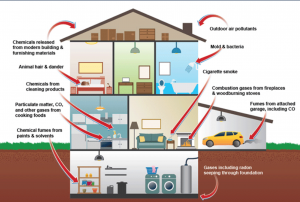
There is growing evidence that gas stoves can have a negative impact on health
Gas stoves are a common household appliance, but they have been linked to a number of health risks. Burning natural gas on a gas stove produces pollutants that can be harmful to human health, including nitrogen dioxide (NO2), carbon monoxide (CO), and formaldehyde. These pollutants can cause respiratory problems, such as asthma, bronchitis, and pneumonia, and can also increase the risk of heart disease and cancer.
Nitrogen dioxide is a gas that can irritate the lungs and cause respiratory problems. It is a major component of smog, and it can also be found indoors from sources such as gas stoves, fireplaces, and cars.
Exposure to NO2 can cause wheezing, coughing, and shortness of breath, and it can make existing asthma worse. NO2 can also increase the risk of heart disease and cancer.
Carbon monoxide is a colorless, odorless gas that can be deadly. It is produced when fuel is burned incompletely. CO can bind to hemoglobin in the blood, preventing it from carrying oxygen. This can lead to headaches, dizziness, nausea, and vomiting, and can even be fatal.
Formaldehyde is a colorless, flammable gas that has a strong odor. It is a known carcinogen, and it can also cause respiratory problems. Formaldehyde is produced when wood, paper, and other materials are burned. It can also be found in some household products, such as glue and paint.
The health risks of gas stoves are particularly concerning for children, pregnant women, and people with asthma or other respiratory problems. Children are more likely to be exposed to gas stove pollutants because they spend more time at home, and their lungs are still developing. Pregnant women are also more vulnerable to the effects of air pollution, and exposure to gas stove pollutants during pregnancy has been linked to low birth weight and other health problems in babies. People with asthma or other respiratory problems are also more likely to be affected by gas stove pollutants. These pollutants can trigger asthma attacks and make existing respiratory problems worse.
There is growing evidence that gas stoves are a major source of indoor air pollution. A study by the American Lung Association found that gas stoves were the leading source of indoor NO2 pollution in homes. The study also found that gas stoves were more likely to be found in homes with children, pregnant women, and people with asthma.
There is no federal regulation of gas stove emissions. The Environmental Protection Agency (EPA) does not regulate emissions from gas stoves, and there are no federal standards for indoor air quality. Some states and cities have adopted their own regulations, but these regulations vary widely.
There are a number of things that can be done to reduce the health risks of gas stoves. These include:
- Using a range hood with an external vent to remove pollutants from the kitchen.
- Cooking with the windows open to ventilate the kitchen (windows fan).
- Switching to an electric stove.
Electric stoves do not produce the same pollutants as gas stoves, and they are a safer option for people with respiratory problems. Electric stoves are also more energy efficient than gas stoves, and they can save money on energy bills.







